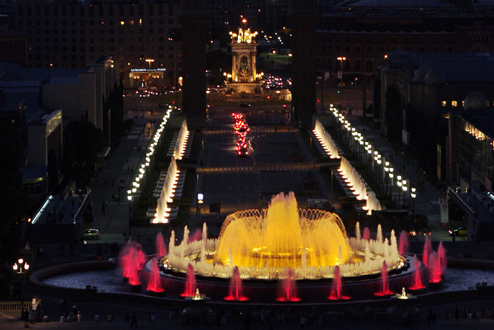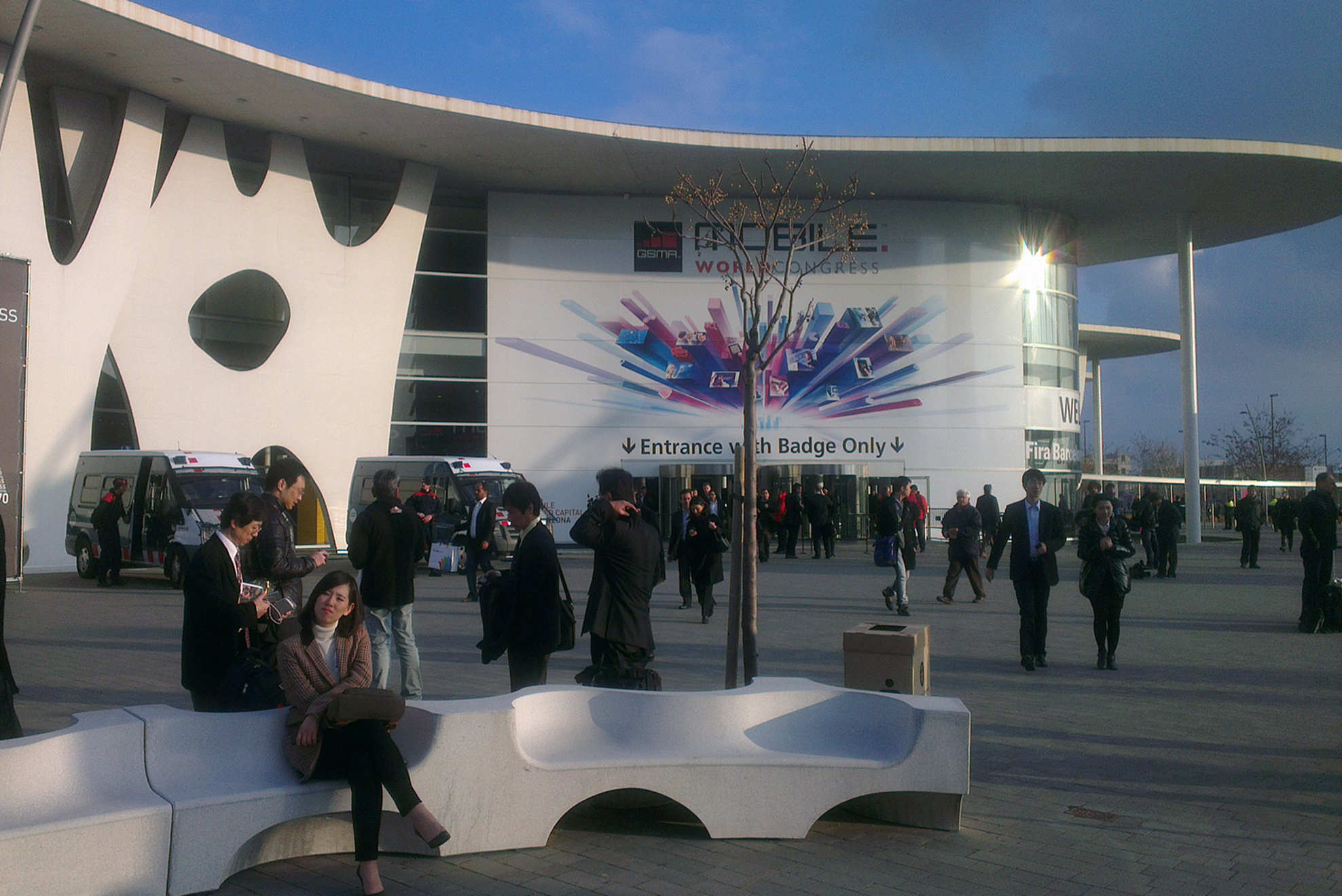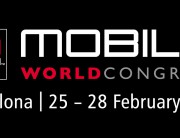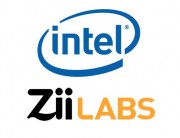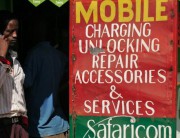Last week I again attended the largest mobile show of the year, Barcelona’s Mobile World Congress. Each year, it’s the show I look forward to most, since it’s a great time to catch up with old friends and colleagues who fly in from Europe, the US, and Asia. In addition, the mobile industry is interesting because it’s clearly leading the whole consumer electronics world, and even making a big impact on society and culture in general. Finally, I like the show because it’s in Barcelona, which is a great city altogether, albeit pretty cold this year (5-10C or 40-50F). If you’re ever in Barcelona, make sure you see the roof of the prettiest church in the world. My four-year-old asked if he could just lie on the floor and stare at it while we were there last summer.
About the new venue
Instead of being held at the Fira Montjuic, where MWC was from 2007-2012, it was held this year at the Fira Gran Via, about 4km away from its previous location.
The old venue, especially at night, had lots of charm:
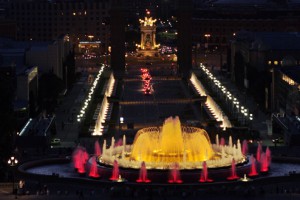
While the new venue lost most of the charm, it doubled the floor space.
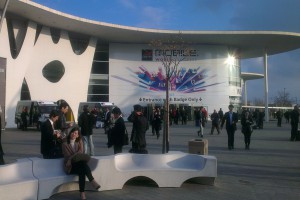
What I liked about the new venue:
- Floor space has become cheaper. Most of the stands (CEVA, Tensilica, Imagination Tech, etc.) were about 1.5x bigger than last year’s. I don’t think their marketing budgets grew by 50%, so the price per square meter must have dropped considerably. I asked several people, but no one could tell me. The big companies (Samsung, Sony, etc.) had even much bigger booths than last year, perhaps 2-3x the size. Small booths should also be cheaper than before. For a small stand at a shared country booth, I heard prices of €1200-2000, which isn’t too bad. The drop in pricing means exhibitors can show more for the same money, so there’s more to see.
- There are many areas where you can sit down for a coffee or simple lunch. Most of these areas are outside (they call them gardens), are quickly accessible, and had a nice feel to them.
- Once you get the hang of the layout, you can find things pretty quickly. There’s a central axis throughout the venue, with airport-like walkways, and even though the venue is twice the size, it doesn’t take much longer to get from hall to hall.
- The entrance is bigger, with many more counters, so it’s much quicker to get into the venue. Hardly any waiting at the door.
- They had more people on staff outside the venue, in the subway stations, directing you toward shuttle buses, metro stations, trains, etc.
- Everyone gets a free subway and train pass. No need to worry about public transit tickets.
What I didn’t like so much:
- The location is less convenient to reach from most hotels. It’s easier to get to the venue from the airport, since they had a shuttle bus that was free, ran often (or maybe I was lucky) and was pretty quick. But from your hotel room in the city, it’s most likely a metro ride and then a train. The trains run often and were a bit full, but it was still pretty quick to get to the venue for me, around 30 minutes, and I stayed close to the famous La Rambla in downtown Barcelona.
- They need more cloakrooms. While I was able to store my stuff, the lines were sometimes long, and some cloakrooms were full. With a bit of shelving, the cloakrooms should be able to hold twice as much.
- Wifi access was supposedly better than before, and I got a signal a few times, but pretty much everyone I spoke to had trouble connecting. Wifi still doesn’t scale well for these types of events, unfortunately. It’s ironic that at the biggest mobile wireless show of the year, they can’t get wireless right.
- The booth numbering inside the halls was pretty bad. You’d expect a chessboard-like A-Z/1-100 naming scheme, but at MWC the letter-number combinations were all over the place.
- Some of the character of the old venue is gone. The fountains, the view of the palace, the cobblestones, and the meeting rooms that are mostly stowed away in the tower are gone.
Major trends at the show
Maybe I missed it, but there weren’t many big announcements that everyone spoke about. Apple hasn’t attended Mobile World Congress for years, although rumor has it there are quite a few Apple employees on the show floor. Samsung had a huge presence, but just like Apple, they’ll announce their new flagship model at a separate event, this year on March 14. Most of the announcements centered around faster, smaller, bigger, and more of this or that, which isn’t really revolutionary. Here’s a quick video overview from the MWC organization that gives a nice impression of the atmosphere at the conference.
Nevertheless, here are some of the trends I saw:
Hooking up the next billion people
One big focus was on hooking up “the next billion people” to the Internet through low-cost smartphones. There are still a few billion people who don’t have access to the Internet or a phone. Firefox OS targets this space with a lightweight, very open OS that has been picked up by several low-cost models. Nokia presented the very lightweight 301 mobile smartphone. Retailing at €65, it targets people in developing countries and gives them access to a browser, e-mail, Facebook, WhatsApp and Twitter. Deloitte found a direct impact from phone and Internet availability on GDP growth, so this is a very good thing. Everyone in the world should have access to the Internet.
Waterproof phones
Waterproofing simply makes a lot of sense to me. Sony did it in 1984 with the first waterproof Walkman cassette player, and now they’re doing it again with their Xperia Z phone. Plaxo’s study found that nearly 20% of us drop our phones into the toilet. Quite a few more folks find their phones in the washing machine, I’m sure. Waterproofing helps there. In addition, I’m looking forward to reading news on my phone in the shower. Watches have pretty much all become waterproof; let’s do the same for phones.
Full HD displays
It’s been only two years since Apple’s iPhone 4 introduced the retina display to the world. At 960×640 resolution, the iPhone 4 has less than 30% of the pixels of the 1920×1080 phones that Asus, Sony, HTC, LG and ZTE announced, so we’ve come a long way in two years. Even the iPhone 5 at 1136×640 only has about 35% of the pixels of Full HD. It’s only been a couple of years since I traded in my 1366×768 pixel TV to a 1920×1080 Full HD one. And since I’m on a standard cable TV package, I can’t even watch Full HD resolution content on my TV. Soon I will be able to on my phone. It’s another example of how the mobile industry is pushing the whole consumer electronics industry forward.
Computer vision and imaging
At least two hardware companies (CEVA and Tensilica) and a bunch of software companies were showing their computer vision processors and techniques for mobile applications. I’m a firm believer in computer vision, and in the next decade it will turn our mobile phones into extremely powerful information devices. Just point the phone’s camera at an object, and the phone will start showing more info. Think Siri for the camera, or Google Analytics for video. Contact me if you’d like to talk about this; I’m quite involved with this technology and would be very interested to discuss and explore further.
Operator commoditization
For many years, mobile operators made their money on voice, text messages, financing your phone, and data services. Since voice and text messaging are quickly going away as a source of income thanks to WhatsApp, Skype, Google+, e-mail, etc., the operators are afraid they’re turning into commoditized dumb-data-pipe providers. As a result, they’re trying to control the experience of the phone much more, and they’re all trying to find new revenue sources. They’re scrambling. One example is Vodafone, Telefónica and Telecom Italia’s urge for regulators to allow consolidation in the industry. “Mobile operators in most markets are suffering from too much competition.” I don’t think competition is the problem; commoditization is.
Wrapping up
Another novelty is that getting a room through Airbnb instead of at a hotel is gaining traction. Using Airbnb, it was easy to find an affordable apartment (€60/night) in a pretty central location (close to La Rambla). A friend of mine even paid €25/night and was happy with the room. Hotel rooms on average ran €250-300/night. Sure, it’s a bit of a gamble, but I’ve found Airbnb to be a good alternative to hotels.
The MWC Android app was pretty horrible. In order to get a map of the show floor with its exhibitors, you needed to be online, which means mobile phone costs.
That wraps up my show report. It was great to catch up with you all, and we’ll see you again next year. I’ll be there for sure.

